Confianza
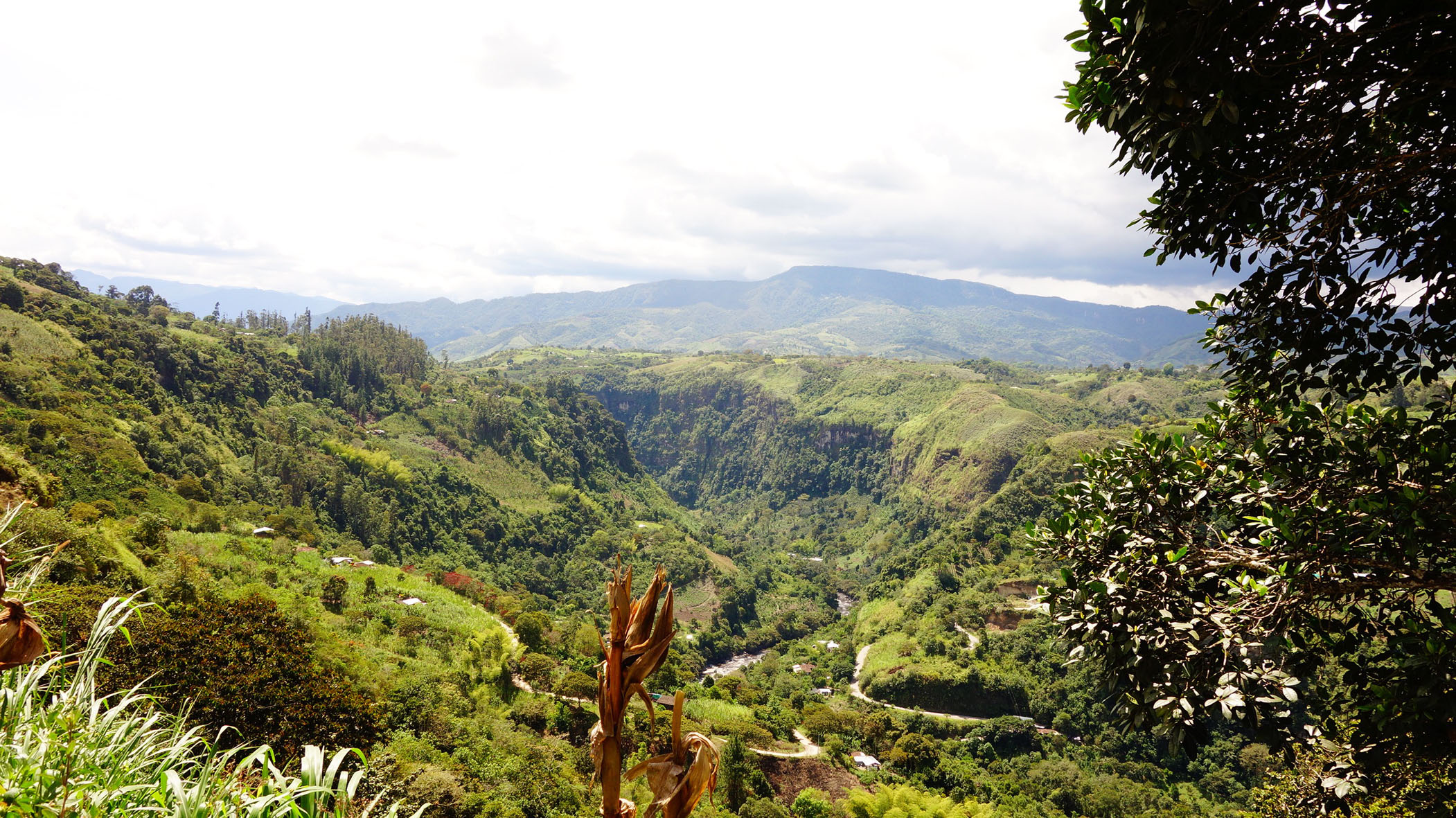
At the beginning of September, after four weeks, I left my first eco-community stop in Colombia: Aldea Feliz (Happy village). I had not been feeling very feliz, to be honest and decided to explore other Colombian options. I spent some time in Bogatá and at a friends place outside of Villa De Layva in Boyacá (north of Bogatá). It was a much-needed change of atmosphere, enjoying laughter, cooking and getting some new perspectives on Colombia: from life in busy Bogatá, to simple chilled days in the countryside. And to my delight I had the chance to participate in a local carnival/march to protect local water rights against a large mining company wanting to explore in the area. It felt good to walk with the local people to sing and chant and feel the collective power of community. It is life affirming and empowering to witness people standing up as a community for the protection of our water, our environment and our future generations.
With friends in Villa de Leyva (Photo from Mar)

Carnival por el agua – Arcabuco
Carnival por el agua – Arcabuco (Photo from Mar)
After my week with friends I headed to the south of the country to volunteer in my second Colombian project: Fundación Viracocha close to the archaeological hub of San Agustín. I arrived at 9pm on a Friday evening to the nearby town of Pitalito, but as my bus was over two hours late I had missed the last bus to San Agustín. I wasn’t sure what to do but I felt calm, and a bit stoned after 11 hours on a bus from Bogatá. I sat to see if I could gather up my fuzzy thoughts and make a plan. An older man came over to me and he asked if I wanted to go to San Agustín. Often there are people trying to pull scams at bus stations but this man reminded me of my granddad; he had a similar sparkle in his eye and with a kindness that I knew I could trust. He was a colectivo driver; this is a type of taxi/bus hybrid and they are usually pickup trucks or jeeps that run set routes. They usually wait until they are full before departing, and they charge a reasonable flat rate. He looked relieved when I said I did want to go. It was late and there were few other potential passengers around. We were only three in total in the pick up, the other passenger was a local woman who clearly knew this man well as they chatted in such a warm and friendly way for the 40 minute journey. They talked about family, friends and celebrations. I had the feeling that I was finally landing into the Colombia that I had been feeling in my heart. I was content to listen to their beautiful Colombian accents as we TORE through the countryside. This old guy had recently bought this truck, he told the woman, and when she said she liked it he picked up speed to show what it could do! He drove incredibly fast along winding roads but I just felt safe and happy in this pickup with these lovely pair.
I arrived at Viracocha in the pitch darkness, as the electricity was out in the area. Through darkness and to the sound of large barking dogs I was greeted and shown, by another lovely man (Diamedes), to a bamboo tipi and to meet my new roommate. It was late so I quickly got to bed and slept.
The ti-pi (which, to me bears a remarkable resemblance to Dougal from the magic roundabout)
Inside the tipi
The next morning I awoke feeling nervous. After Aldea Feliz I was anxious about volunteering. I was in a pretty negative and critical state of mind about eco-communities and projects: so my initial sense of Viracocha was that I felt a bit disappointed: I didn’t know if I would be able to relax here, if I could trust them or if I would be leaving after a few days. With the slightest hint of bother I had decided I would be out of there! To my shame, my critical eye caught on every snaggely detail: I didn’t like that there was no toilet paper, I didn’t like that we had to cook with a real fire, I didn’t like sharing a room again, I didn’t like that it wasn’t a community or that we had to start work at 7am… wow.. I was grumpy that first morning. But I got to work: I started by cleaning the volunteers’ kitchen and then was set the task of putting compost on pumpkins. I was there only a while when Steffen, whom I had met previously in Aldea Feliz, came along to greet me and invited me on a tour of the land with two Italian visitors. For two hours we walked around the site learning about its origins and getting a sense of the work that they do there. It was a pleasure to listen to the story of the place, to hear about their holistic approach to growing and teaching, and the details of their beautiful natural buildings. After the tour I got to meet the three other volunteers properly, I liked them all immediately, and we prepared lunch together (we prepared our own food at the weekends). Sometime between the tour and preparing lunch and chatting together something kind of magical happened: I felt myself breathing a sigh of relief, I just knew I could trust these people and this place. I could relax here. When I was alone later I cried with the sheer relief of finally, after months of stress, being able to begin to let my guard down and truly relax and land. It took me a few days to realise that I could and would stay here for a while.
The name Viracocha comes from Inca mythology; it is the name of the creator deity, seen as the creator of all things. He was worshipped as the god of the sun and storms, and is represented as wearing the sun for a crown, with thunderbolts in his hands, and rain flowing from his eyes. Fundación Viracocha was formed by Steffen (from Germany) with his wife Lina (from Colombia) in 2000 in partnership with members of the local community. It is not an intentional eco-community: it is an education centre that was developed to serve the community through programmes that provide food and practical education. Its mission is to:
“Promote alternative development socially, environmentally and economically, aimed at creating sustainable conditions that allow for the improvement of quality of life and for the construction of a healthy social fabric that is in harmony with the environment”
They currently have two sites: one is Finca Viracocha (a farm) outside of San Agustín where I was staying and the other is a building in the town where lunches are prepared and served Monday to Friday as part of the AiE programme. AiE (Alimentation i Educacion – Food and Education) is one of the two main programmes in the foundation, the other is CEPA (Centro Educativo Piloto Agroecológico), a pilot agro-ecological centre for education. The main objective of AiE is to offer alternatives for healthy nutrition and education for the local marginalized population, which does not have governmental or institutional support for these basic needs. The programme benefits approximately 105 low-income children from local elementary and secondary schools. The purpose is to educate the children in the importance of proper nutrition through awareness of the consumption of fruits, vegetables and native foods, many of which are grown in Finca Viracocha. AiE is subsidised by donations from Viracocha’s partner association in Germany VIRAS (Viracocha Salzgitter) through their sponsorship programme. CEPA is a pilot model focused on the recovery of natural and socio-cultural values in the region: it provides a practical theoretical education based on a sustainable ecological management of agricultural, forestry and agroindustry, integrating the community in rural economic and social development processes.
CEPA and AiE are programs designed to complement each other; creating a process of food sovereignty and security at municipality and regional levels. The comedor (dining room) in San Agustín where lunches are served each day is an example of where the agro ecological work and nutritional knowledge come together in tasty, healthy meals to feed children and adults.
Finca Viracocha is made up of five hectares of land that sits alongside the stunning canyon of the Río Magdalena, which starts in the south up in the Páramo and runs all the way north to the Caribbean coast. There is a large garden where a lot of the food for the AiE lunches is produced and there are also large areas of trees and guadua (bamboo) and a nature reserve to the edge of the river canyon. Buildings on site include the home of the farm caretakers, dwellings for volunteers and course participants (tipi, tree house and kiosk), the volunteers kitchen, the malloca (meeting house), the seed house and a large guadua / bamboo preparation area. A variety of courses are run here; tailor made to suit different groups, teaching aspects of holistic ecology and providing practical hands on experience.
The Maloca
Sunrise from the maloca
The Maloca – a divine dance space where I got to teach my first Movement Medicine class in Colombia
So my day at Viracocha usually started at 5:30am when I would get up and go to the maloca to dance and meditate at sunrise. We started work at 7am and worked until noon with a break around 10am. At noon we showered, changed and walked 20 minutes to the foundation building in San Agustín where we all had lunch together. The food was always delicious and mostly vegetarian and included a soup, a salad and a main course. We (the staff and volunteers) usually ate lunch after the children but often some of the children and some adults would be there at the same time as us. The food really is so good; it uses a balance of locally grown vegetables to optimise nutrition with quinoa, amaranth, chia, pumpkin, beans, yucca etc and it really is a joy to see these kids in particular getting such a healthy balanced meal. For us, the foundation provided lunch Monday to Friday. We provided our own breakfast and evening meals and it meant learning to cook on a real fire, which I ended up loving. Its interesting the things that first annoy you can give you such pleasure.
View towards Rio Magdalena
My work included a few hours of work in the garden each morning: turning compost, planting seeds, tying up peas or beans and sometimes included cleaning and painting. I loved working in the garden – this part of the world is like a constant spring – with seeds being planted, plants growing others being harvested – the cycle of life is in full flow all year round. After a few hours in the garden I would work on the design a new educational building on the site. The building is at early stages of design but it is hoped that it will begin construction soon. It will house the kitchen and comedor (dining area) from the town, a coffee processing area and café with coffee drying and classrooms. All areas are to be creative learning spaces; teaching about holistic ecological growing, of food and preparation of healthy nutritious food, the sustainable and organic growth of coffee and production. This building holds the essence of what Viracocha is about: a place of dedication to holistic living in every aspect: in the design we brought in permaculture principles and great care in the design for education. This way of working also embodied the Viracocha approach: a good balance for me of physical work and some design time and a chance to really experience different aspects of the foundation.
La casa de las semillas – seed house on the lower floor and the office on the upper floor, where I worked on drawings for the new educational building.
Life in Viracocha was so much about the people there. The solid bedrock of the foundation are: Lina and Steffen, who look after the administration of the foundation and some of the teaching on courses; the family that live on the site as guardians: Diamedes who looks after the site and Nelci who takes care of preparing stunning meals, and Maribel and Carlos who take care of the work in the garden and manage day-to-day tasks including co-ordinating the volunteers.
It was beautiful to stay for a few weeks to feel how Fundación Viracocha weaves into the local community. I got to meet people who come to the site on a regular basis, like Oscar the bee-keeper: I just love this man! He is so gorgeous and kind and passionate about bees and life. It was beautiful to get to know some of the neighbours from walking into town each day and to get to know people working in the local area from buying bread and supplies.
Oscar the bee-keeper
And our little community of volunteers changed from week to week: in my five weeks there I had varying and different experiences with the volunteers that arrived. I was amazed at how different it was in the place from week to week depending on the constellation of people, and I became so curious about my gravitational pull towards some people and my need for distance from others. It was interesting to witness and trust my pull to be alone or to be with others. I realise how important it is in community to listen to this need for this balance of connection and space. And I learned more about the time grace and flexibility needed to open to what different people bring. Each week the energy of the group changed and there were always new challenges but also new opportunities: culinary possibilities, sharing life experiences, laughter, excursions and learning fire building techniques. These simple activities together are really at the core of what it is to be in community together; learning how to adapt to one another and also to listen to your core needs.
‘Hiking’ to Rio Magdalena 🙂 (Photo from Tanya)
Jorge-Andres and I
Volunteers at Viracocha October 2017 (Photo from Anne-Helene & Sylvain)
I feel that something very beautiful and healing happened for me in Viracocha and I feel that it was really down to the ethos with which Lina and Steffen hold the place: they hold a strong sense of trust in people and in life and it is infectious! They are inspiring to be around; they work with ease, without stress and their project seems to grow very naturally. They carry their values through in all aspect of what they do: it’s a beautiful example of true holistic design: from communication, to food growing and into building design and education. I have been really inspired by the model that they use and the values that underpin it. I could see how this combination of attending to the land and providing practical experiential education around food in partnership with the local community created something of real holistic value. It is a model that could be applied to a living community – and I feel inspired to bring these values through into my future projects.
Fundación Viracocha is not a community but I felt very clearly a part of the place while I was there – we, the volunteers were welcomed acknowledged and were part of the place, if even for a short period of time. Viracocha does what it says. This is such a simple thing but in my experience many communities and projects have created great public images for themselves but are currently falling short of living by their own ideals. In Viracocha there is a consistency to the work that they do and really what I felt from the people and the foundation is a deep seated trust in life. I felt trusted there and so I trusted others. And from a foundation of deep trust, really, anything is possible!
Thank you so much to Maribel and Carlos who manage the day to day running of the garden and associated works so beautifully, to Diamedes and Nelci and their family for caring for the land to Nelci and Jelbi for incredible food. Thank you to all the wonderful volunteers for such laughter and life lessons: Otis, Tanya, Martin,Valentina, Jorge-Andres, Virna, Joan, Ann-Helene and Sylvain. And very especially to Lina and Steffen whose integrity, heart and trust in life are a true inspiration.
Quinoa and Amaranth – two native and nutricious crops
Weekly harvest for AiE at finca Viracocha
My project of exploring community is fully supported through my creativity: through the sale of my art and by a virtual online community through crowd funding. If you would like to support me on this journey you can check out my art on www.sineadcullen.com or make a donation on my Crowd funding campaign https://www.gofundme.com/LetsCreate or through PayPal by using my email address: sinead.a.cullen@gmail.com
REFERENCES

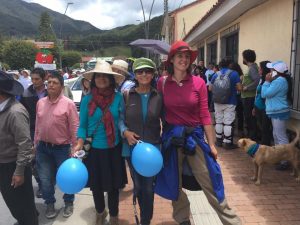

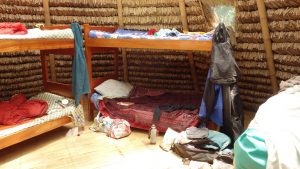
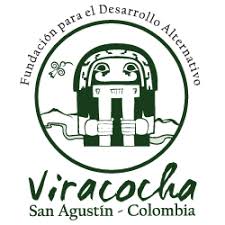
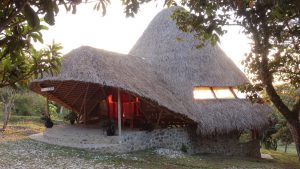

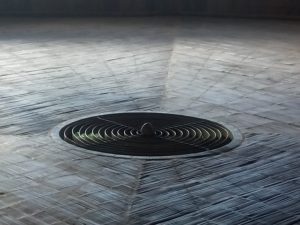
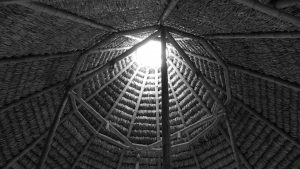

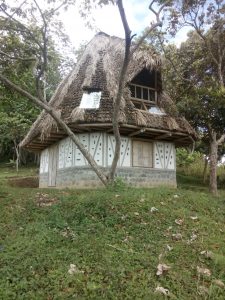

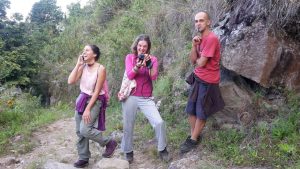





Recent Comments